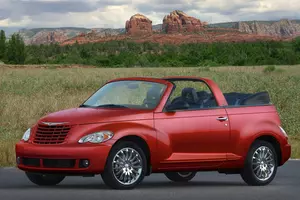
| Vehicle | Curb weight | Difference from world's smallest | Weight to power ratio | 0—60 mph acceleration ratio | Consumption ratio |
|---|---|---|---|---|---|
| 2.0 i 16V |
1500 kg / 3308 lbs |
1075 kg (2371 lbs) heavier | 11 kg to 1 hp | 163 kg/s (359 lbs/s) |
169 kg/L (373 lbs/L) |
| Vehicle | 2.0 i 16V |
|---|---|
| Curb weight |
1500 kg / 3308 lbs |
| Difference from world's smallest | 1075 kg (1075 lbs) heavier |
| Weight to power ratio | 11 kg to 1 hp |
| 0—60 mph acceleration ratio | 163 kg/s (359 lbs/s) |
| Consumption ratio |
169 kg/L (373 lbs/L) |

| Vehicle | Curb weight | Difference from world's smallest | Weight to power ratio | 0—60 mph acceleration ratio | Consumption ratio |
|---|---|---|---|---|---|
| 2.0 i 16V |
1410 kg / 3109 lbs |
985 kg (2172 lbs) heavier | 9 kg to 1 hp | 134 kg/s (295 lbs/s) |
133 kg/L (293 lbs/L) |
| 2.4 i 16V Turbo |
1450 kg / 3197 lbs |
1025 kg (2260 lbs) heavier | 8 kg to 1 hp | 204 kg/s (450 lbs/s) | - |
| 2.4 i 16V |
1420 kg / 3131 lbs |
995 kg (2194 lbs) heavier | 9 kg to 1 hp | 145 kg/s (320 lbs/s) | - |
| 1.6 i 16V |
1370 kg / 3021 lbs |
945 kg (2084 lbs) heavier | 12 kg to 1 hp | 107 kg/s (236 lbs/s) |
171 kg/L (377 lbs/L) |
| 2.2 16V CRD |
1515 kg / 3341 lbs |
1090 kg (2404 lbs) heavier | 10 kg to 1 hp | 155 kg/s (342 lbs/s) |
220 kg/L (485 lbs/L) |
| 2.2 CRD |
1540 kg / 3396 lbs |
1115 kg (2459 lbs) heavier | 13 kg to 1 hp | 134 kg/s (295 lbs/s) |
223 kg/L (492 lbs/L) |
| Vehicle | 2.0 i 16V |
|---|---|
| Curb weight |
1410 kg / 3109 lbs |
| Difference from world's smallest | 985 kg (985 lbs) heavier |
| Weight to power ratio | 9 kg to 1 hp |
| 0—60 mph acceleration ratio | 134 kg/s (295 lbs/s) |
| Consumption ratio |
133 kg/L (293 lbs/L) |
| Vehicle | 2.4 i 16V Turbo |
| Curb weight |
1450 kg / 3197 lbs |
| Difference from world's smallest | 1025 kg (1025 lbs) heavier |
| Weight to power ratio | 8 kg to 1 hp |
| 0—60 mph acceleration ratio | 204 kg/s (450 lbs/s) |
| Consumption ratio | - |
| Vehicle | 2.4 i 16V |
| Curb weight |
1420 kg / 3131 lbs |
| Difference from world's smallest | 995 kg (995 lbs) heavier |
| Weight to power ratio | 9 kg to 1 hp |
| 0—60 mph acceleration ratio | 145 kg/s (320 lbs/s) |
| Consumption ratio | - |
| Vehicle | 1.6 i 16V |
| Curb weight |
1370 kg / 3021 lbs |
| Difference from world's smallest | 945 kg (945 lbs) heavier |
| Weight to power ratio | 12 kg to 1 hp |
| 0—60 mph acceleration ratio | 107 kg/s (236 lbs/s) |
| Consumption ratio |
171 kg/L (377 lbs/L) |
| Vehicle | 2.2 16V CRD |
| Curb weight |
1515 kg / 3341 lbs |
| Difference from world's smallest | 1090 kg (1090 lbs) heavier |
| Weight to power ratio | 10 kg to 1 hp |
| 0—60 mph acceleration ratio | 155 kg/s (342 lbs/s) |
| Consumption ratio |
220 kg/L (485 lbs/L) |
| Vehicle | 2.2 CRD |
| Curb weight |
1540 kg / 3396 lbs |
| Difference from world's smallest | 1115 kg (1115 lbs) heavier |
| Weight to power ratio | 13 kg to 1 hp |
| 0—60 mph acceleration ratio | 134 kg/s (295 lbs/s) |
| Consumption ratio |
223 kg/L (492 lbs/L) |